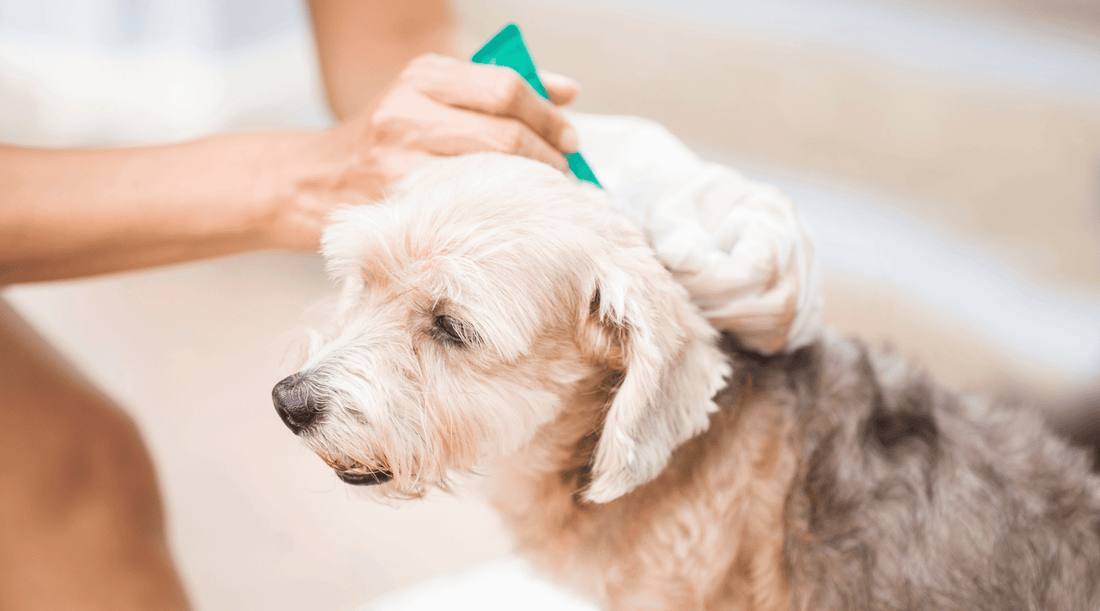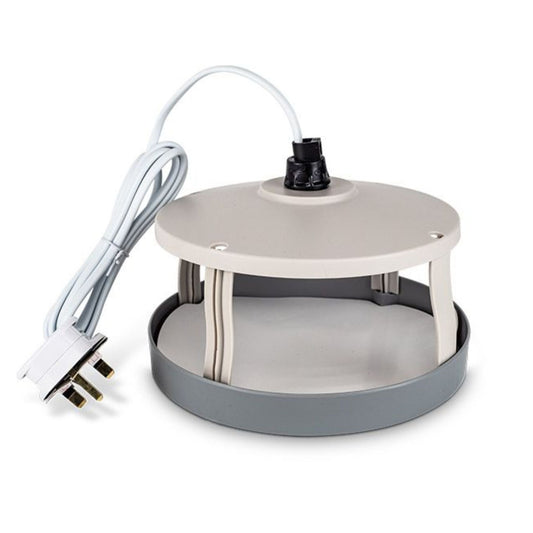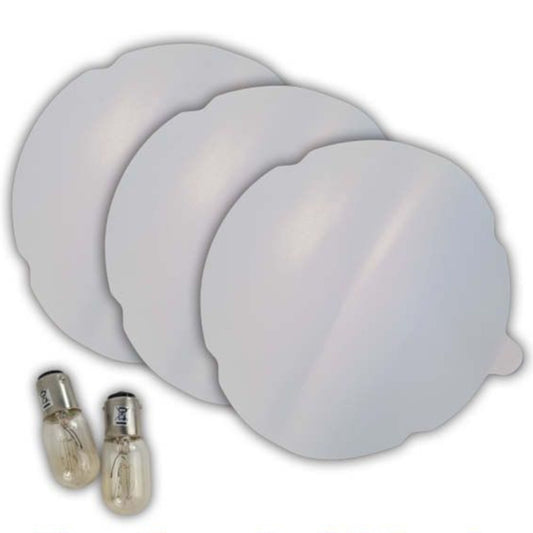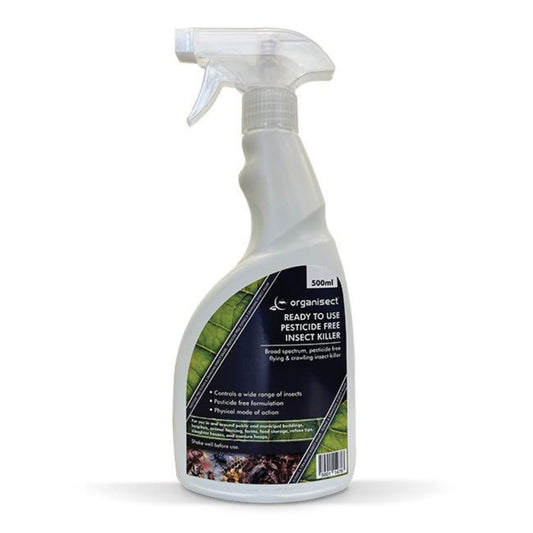
Expert Guide on How to Get Rid of Fleas Yourself
Share
Of all the pests out there, fleas are one of the worst. That's because they bite. Fleas feed on blood, and they will happily bite us if they can't get anything else.
Most people react to bites, making them itchy and uncomfortable. And if you have cats and dogs, your chances of getting fleas are much higher.
Luckily, there's a lot you can do to get rid of fleas yourself. Let's look at ways of treating your house for fleas so that you can keep your home and your pets free of these irritating pests.
Understanding Flea Behaviour
What Are Fleas?
Fleas are insects that feed on the blood of other animals. There are different species of fleas, including cat fleas (Ctenocephalides felis), dog fleas (Ctenocephalides canis), and even human fleas (Pulex irritans). Don't get too caught up in the species, because all fleas will bite humans if they're hungry.

Identifying fleas
Adult fleas are around 2.5mm long. They're hard to spot, and the first sign of them is often the bites they cause. If your pet is scratching, they may be getting bitten. And you may start noticing bites yourself.
Fleas don't have wings and are almost flat laterally. They are brown-black in colour, but more reddish once fed. Fleas are famous for their ability to jump, so look out for small jumping bugs.
Fleas usually stay close to their host. Eggs and larvae are often found where pets spend time, such as in their bedding.
Why Fleas Infest Homes and Pets
The reason fleas get inside our homes is quite simple: we and our pets provide food for them. There are several ways fleas can get into your home:
- Pets. During summer, fleas can live outdoors in the UK. It's easy for an outdoor cat or dog to pick fleas up from the environment.
- Other animals. If you have feral cats near your home, fleas may get inside that way. Wildlife like foxes also often carry fleas and can spread them to humans.
- Bringing them inside yourself. Because they jump, a flea can get a lift on your shoe or your trousers and come in from outside.
- Dormant eggs. Part of what makes fleas so hard to get rid of is that the eggs go dormant if there's no food source. You can move into a place with a flea problem without knowing it.
Lifecycle and Breeding Habits of Fleas
Part of what makes fleas so tough to handle is that they have a complex breeding cycle and an extremely high reproductive rate.
Fleas undergoes metamorphosis similar to other insects such as butterflies. Adult fleas lay eggs on host animals such as cats and dogs. These fall onto other surfaces such as bedding and carpets and hatch into larvae. Once they mature into adults, they seek a new host and lay eggs, starting the cycle over again.
Fleas start out as eggs, which are white and around half a millimetre long. A female flea will lay 4-8 eggs after each blood meal and can lay around 500 eggs in her lifetime. Eggs are usually laid between the hairs of the host animal or in their bedding material. The eggs are not stuck in place, so they easily fall off as the animal moves around or scratches.

In optimal conditions, flea eggs can hatch out in two days. Flea eggs hatch quickest at 30°C and relative humidity over 70%. Most of our homes are not that hot or humid, so eggs may take longer to hatch.
Once a flea hatches, it emerges as a larva. The larvae look like little white worms, and are significantly bigger than the adult fleas - sometimes up to 5 mm in length. The larvae don't bite, but eat flea dirt - the dried blood the adult fleas defecate.
The larvae go through three stages of growth. This can take 1 to 2 weeks or several months, depending on the availability of food, temperature, and humidity. The larvae need relative humidity between 45% to 95% to grow.
To become adults, they spin a cocoon known as a pupa. Inside, they change into adults. This can take as little as four days, or as long as 170 days. Fleas can stay dormant in empty houses and emerge once they feel the vibrations and warmth of nearby hosts.
Inside these cocoons, the fleas are immune to pesticides.
Once they emerge as adults, they seek a host. However, if they can't find one, they can survive months without feeding. Once they do find a host, they will usually stay on it for their whole lives if it's a cat or a dog. Adult fleas can live up to one year.
Having a flea infestation is extremely distressing. If you're dealing with these pests, remember that although fleas will bite humans, they don't live on us the way they do on cats and dogs. Even the hairiest of us aren't furry enough to provide fleas with the protection they need.
Because female fleas can lay 500 eggs, flea populations grow extremely fast. Plus, their ability to go for long periods without feeding means getting rid of fleas often takes multiple treatments.
Health and Safety Risks
Being bitten by fleas isn't a pleasant experience. Even worse, fleas and their bites are a risk to human and animal health.
Famously, fleas carried by rats were responsible for the plague in medieval Europe. Plague still exists, but thankfully not in the UK. Fleas transmit a disease known as murine typhus, although again, this is very rare in the UK. They also spread tapeworms between dogs and cats.
Much more likely is a skin irritation from scratching itchy bites, both for you and for your pets. Broken skin from scratching bites becomes an infection risk, and some people have severe allergic reactions to the flea's saliva.
For pets, fleas cause allergic dermatitis, and if enough fleas feed on an animal, they can even cause anemia. That's why it's important to ask your vet how to get rid of fleas on cats and dogs.
If you have fleas, you need to get rid of them fast.
Identifying Signs of a Flea Infestation
Fleas are tiny and difficult to spot. However, once infestation starts, these signs can reveal a flea problem:
- Pets scratching themselves, licking, or biting more than usual;
- Getting small red bites yourself, especially around ankles or on arms and hands after contact with pets;
- Spotting flea dirt, which usually looks like black specks similar to pepper, but will turn red when wet;
- Seeing adult fleas.
Where to find fleas
- Pet bedding and areas where your pets like to spend time.
- Carpets, especially near skirting boards.
- Soft furniture like sofas and beds.
- Cracks and crevices in furniture, skirting boards, scratching posts, and pet beds.

If you think you have fleas, make a trap by filling a dish with water and a few drops of dish soap. Shine a lamp onto the water. Fleas are attracted to light and will jump toward the lamp, then fall into the water. Leave the dish overnight, and if you have fleas in your home, you'll see some inside the dish. Alternatively, if you do not have time to do this, use a electric flea trap which can start catching fleas almost immediately.
Preventing Flea Infestations
It's tricky to keep fleas out of your home. However, there are steps you can take:
- Have your vet check pets regularly, and follow vet-recommended flea treatments for how to get rid of fleas on dogs.
- Groom your pets and check for flea signs.
- Brush your pets after they have been outside.

Inside, keep fleas out by:
- Vacuuming carpets, furniture, and pet areas. The vibrations encourage fleas to emerge.
- Wash pet bedding regularly in hot water.
- Steam clean soft furniture to kill fleas and eggs.
- Remove anything that attracts wild animals like foxes and birds to your home.
DIY Flea Solutions
Natural Solutions
If you want to learn how to stop fleas quickly then you may wish to follow this section closely.
The most important step in getting rid of fleas is treating your pets first. Often, a single application of a vet-recommended product can eliminate a mild flea problem. Talk to your vet about the best treatment for your situation. Regularly wash pet bedding in hot water and freeze infested items for 48 hours to make sure you kill all fleas and their eggs.
Fleas are vulnerable to dehydration, and need humidity to grow and develop. In the UK, it's hard to get your home below the 45% relative humidity that fleas need. However, sprinkling diatomaceous earth on pet bedding, carpets, hardwood floors and furniture can dehydrate and kill fleas. If not available, you can also try using salt or baking soda.
Finally, vacuum regularly - ideally every day. The vacuum kills any fleas it sucks up, and the vibrations cause fleas to emerge earlier, making them vulnerable to treatments. Be thorough and dispose of vacuum bags or empty the canister outside immediately.

Chemical Solutions
If natural solutions are not effective, chemical interventions may be necessary. Before using any chemical products, make sure you understand the active ingredients and any potential side effects. Always read and follow the instructions carefully, wear disposable gloves and eye protection and apply treatments when family members and pets are not present.
As a first step, consider non-toxic natural bug sprays to kill fleas designed to kill fleas on contact. These are generally safe to use around children and pets and can be very effective for milder infestations.
For more persistent problems, opt for sprays containing residual insecticides such as permethrin, which continues to kill fleas even after drying. Some flea solutions also contain an insect growth regulator - synthetic hormones that disrupt the flea lifecycle by preventing eggs and larvae from maturing.
Persistence is key. Flea pupae are resistant to pesticides, so even after treatment, new fleas may continue to emerge. Re-treat your home as needed and vacuum frequently to encourage fleas to hatch and come into contact with treatments.
Professional Flea Control
Fleas are extremely persistent. Sometimes, you need a professional, especially if you live in a flat and the problem has spread through the building. Professional exterminators have access to powerful chemicals and experience in solving pest situations, so don't be afraid to get help.
Final Thoughts
If you're wondering how to get rid of fleas by yourself, it's possible, but it takes a lot of work. Regular pet treatments combined with thorough cleaning and a targeted use of insecticides can get fleas out of your home, but it will probably take multiple attempts to get on top of the flea's lifecycle.
The easiest way to get rid of fleas yourself is to treat your pets first. Groom your pets, take them for vet inspections if you suspect fleas, and pay attention to where they go outside, especially in the summer months. That way, you can maintain a healthy and flea-free home for you and your pets.
At PestBuddy, we're here to empower you with safe, effective, and easy-to-use DIY flea control products. Explore our range of products to take control of your pest problems with confidence.




